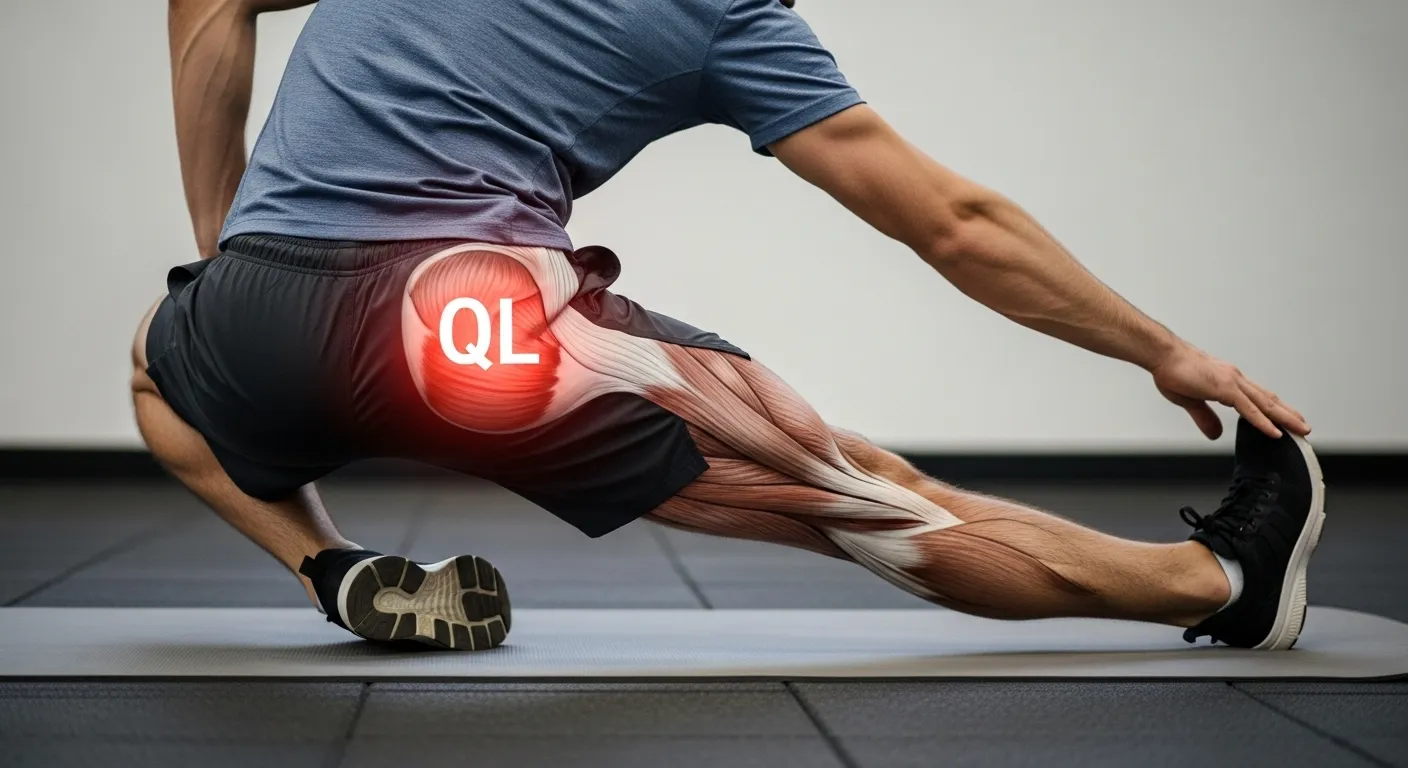Unlock Your Shoulders with Thread the Needle Stretch
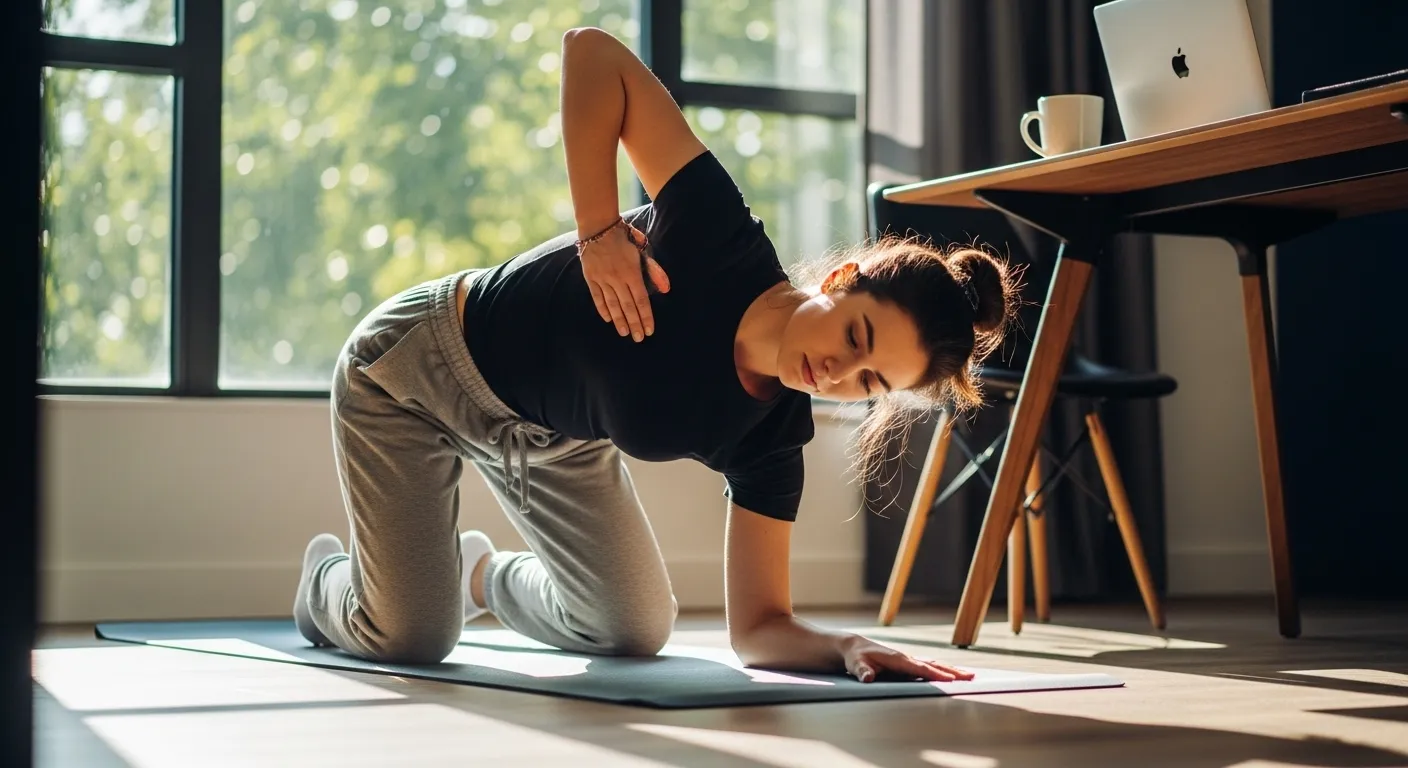
If you’ve ever felt your shoulders tighten up after hours at a desk or while scrolling on your phone, you’re not alone. Most people carry tension up there without realizing it. One of my go-to moves for this is the thread the needle stretch.
It looks simple, but it’s sneaky. It opens the shoulders, stretches the upper back, and gives that deep twist your spine secretly craves.
I teach this pose a lot, in yoga classes, to office workers, even to athletes who sit more than they should. You don’t need to be flexible. You don’t even need to be “into yoga.” It’s just a smart move for your body.
Why Thread the Needle Works So Well
The thread the needle yoga pose targets your shoulder joint, upper back, and the thoracic spine. That’s the part between your neck and lower back. It’s where most of us lose mobility first because we sit hunched, rounding the upper back and closing the chest.
When that area gets tight, the shoulders take the hit. They start losing range of motion. You’ll notice simple things, like reaching back for a seatbelt or lifting something overhead, feel stiff or strained.
I’ve worked with hundreds of clients on shoulder mobility exercises, and the pattern is the same. The more we open the thoracic spine, the freer the shoulders move. That’s what makes the thread the needle stretch so powerful. It does both at once.

How to Do Thread the Needle Pose (Step-by-Step)
Here’s how I guide people through it. Go slow the first time. Don’t force the twist.
Step 1 : Start in Tabletop
Get on your hands and knees. Hands under shoulders, knees under hips. Keep your spine neutral. Take a few deep breaths here. Feel where your weight sits, balance it between hands and knees.
Step 2 : Reach and Thread
Inhale and reach your right arm out to the side, opening your chest. Then exhale and slide that same arm under your left arm. Let your right shoulder and ear come down to the mat. Your left hand can stay where it is, or you can reach it forward for a deeper shoulder blade stretch.
Step 3 : Find the Twist
Once you’re down, don’t rush. Let gravity do the work. Keep your hips stacked. Your right palm can face up or down, whichever feels better.
Step 4 : Breathe
Stay here and take five slow breaths. Each exhale should melt your upper back a little closer to the floor. Feel the twist from the middle of your spine, not just the shoulder.
Step 5 : Return Slowly
Press into your left hand, slide your right arm back out, and come back to tabletop. Take a moment to notice the difference between your two sides. Then do the same on the other arm.
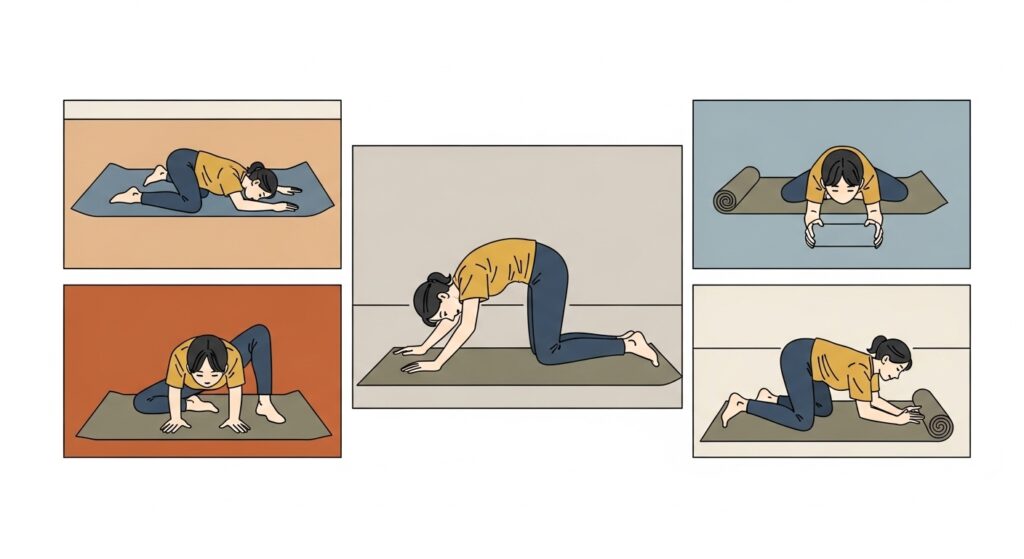
That’s one full cycle. I usually have people repeat two or three times on each side.
Common Mistakes to Avoid in Thread the Needle Pose
Even though it looks easy, people often make small mistakes that can cause shoulder pinching or neck strain. Here’s what to watch for:
| Mistake | Fix |
|---|---|
| Dropping the hips to one side | Keep your hips straight on the mat. Think of your tailbone going straight back. |
| Pushing too deep, too soon | Move until you feel a gentle stretch, not pain. Let the twist grow with breath. |
| Forgetting to breathe | Slow breaths help release tension and protect the spine. |
| Jamming the shoulder down | Ease in. Shoulder should rest softly, not forced. |
| Tensing the neck | Loosen up the muscles in your jaw and neck. Rest your head. |
These tweaks make a big difference. Once you get the feel, the pose almost does itself.
The Benefits of Thread the Needle Stretch
So what exactly happens when you practice this move often? Let me break it down from both yoga and mobility perspectives.
1. Shoulder Tension Relief
Most of us live with tight traps and stiff rotator cuffs. The thread the needle stretch lets those muscles finally relax. It’s like a reset button for your upper body.
2. Thoracic Spine Mobility
This is the part that controls your posture. A tight thoracic spine can cause rounded shoulders and even neck pain. By rotating through this area, the stretch helps restore movement that sitting steals from you.
3. Upper Back Flexibility
Many people think flexibility is just about hamstrings. Not true. The upper back plays a big role in how you breathe and move. This pose increases space between the shoulder blades and improves spinal rotation.
4. Better Posture
Yoga for better posture often includes poses like cat cow, child’s pose, and reclined twist yoga. Thread the needle fits right in. It strengthens awareness in the muscles that keep your back tall.
5. Relaxed Breathing and Focus
During this stretch, the breath naturally deepens. It opens your rib cage and helps calm your mind. That’s why it’s great as part of a yoga cool down or before bed.

When and How to Use It
You can add the thread the needle stretch almost anywhere in your day:
- After sitting all day at work
- Before or after a workout
- As part of yoga for desk workers
- During yoga warm-up stretches
- To unwind during a cool down stretch after workout
If you’re new to yoga, this pose is one of the best shoulder opening yoga poses for beginners.
For Beginners: Go Easy on the Twist
When I first teach this, people often twist too deep too fast. They think “more twist = better stretch.” Not true. The goal isn’t to push; it’s to breathe into the tension.
If you’re doing thread the needle stretch for beginners, use a pillow or folded blanket under your shoulder. That small lift can make the pose feel much safer.
Also, if you feel pressure in your wrist or neck, shift your weight slightly forward or back until it eases. There’s no rush.
Safe Shoulder Stretching Techniques
Shoulders are sensitive. They’re built for movement, not for bearing too much load. When you stretch them, always listen to small signals, warmth, pulling, light shaking are fine. Sharp pain is not.
If you’ve had a shoulder injury, there are yoga modifications for shoulder injury you can try:
- Keep the supporting arm bent instead of straight.
- Limit how far you twist.
- Stay shorter in the hold (10 to 15 seconds instead of 30).
I’ve seen people recover shoulder mobility faster when they focus on control, not depth.
Pairing Thread the Needle with Other Poses
I often build this pose into short yoga flows for shoulder mobility. Here’s a simple one:
- Cat Cow Yoga Pose: Warm up the spine. Move with breath for about 30 seconds.
- Thread the Needle Stretch: Right side, then left.
- Child’s Pose Stretch: Let the arms reach forward. Rest here for a few breaths.
- Seated Spinal Twist: Helps balance out the rotation.
- Reclined Twist Yoga: To close, lie on your back and twist both sides gently.
This combo works great for people who spend long hours sitting. It wakes up the spine, improves shoulder rotation stretches, and helps with upper back tension relief.
Thread the Needle for Desk Workers
Sitting too long shortens your chest muscles and weakens your upper back. That’s why desk workers often feel tension between the shoulder blades. Doing a few rounds of this pose midday can help.
You don’t even need a yoga mat. I’ve had clients use a towel or even do a seated version:
- Sit tall, cross your right arm under the left, and twist gently from your upper back.
- It’s not as deep as the floor version but still works.
It’s simple yoga for desk workers, quick, quiet, and effective.
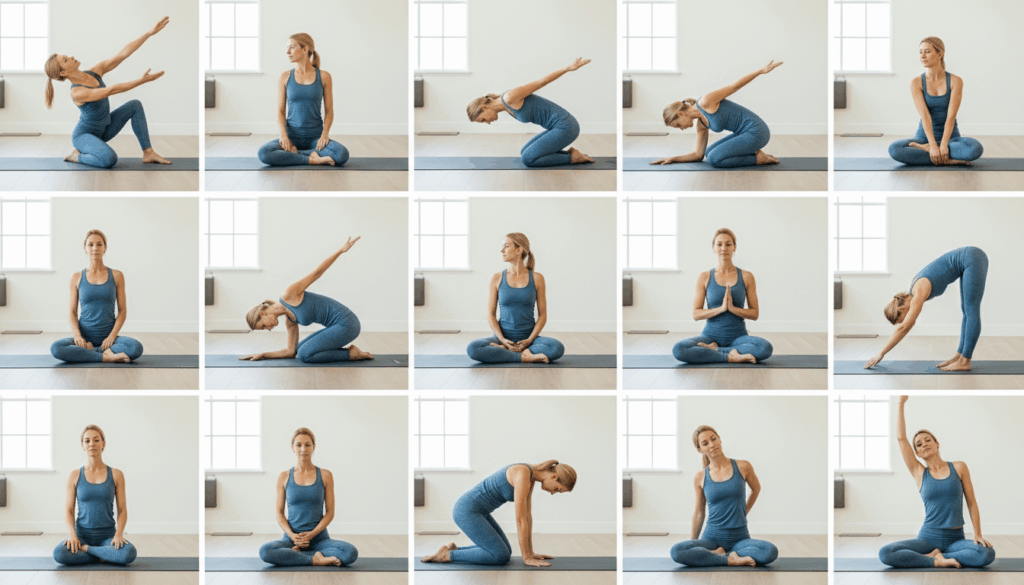
Yoga for Shoulder Pain Relief
This stretch blends well with other yoga for shoulder pain relief moves like:
- Eagle arms: great for shoulder blade stretch.
- Puppy pose: a deep shoulder opener.
- Cow face arms: targets rotator cuff and triceps.
But remember, if your shoulder pain is from an injury or inflammation, skip deep holds. Focus on safe shoulder stretching techniques and gradual improvement.
Breathing During the Stretch
Breath is what makes yoga different from random stretching. When you do thread the needle, breathe through the twist.
Try this pattern:
- Inhale: Expand your ribs.
- Exhale: Soften into the floor.
Each exhale lets your body relax and deepen naturally. Breath tells your muscles it’s safe to release. I always remind students that breathing during yoga stretch is more important than how far they go.
Why It Helps the Thoracic Spine
Your thoracic spine is the middle section, the area that supports the ribs. When it’s stiff, everything above and below has to overwork. That’s why people with tight thoracic spines often get neck or lower back pain too.
Thread the needle helps by adding controlled rotation. It gently opens the joints between vertebrae, which builds thoracic spine mobility over time.
After a few weeks of consistent practice, you’ll notice your upper back flexibility improve and your shoulders move more freely.
Shoulder Flexibility and Posture Connection
Poor posture doesn’t just look bad, it changes how your muscles fire. When shoulders round forward, certain muscles (like the pecs) tighten, and others (like the mid-back) weaken.
Thread the needle helps reverse that. It’s one of the few yoga for upper back pain poses that also re-trains posture awareness.
Combine it with shoulder flexibility yoga sessions once or twice a week. You’ll feel the difference when you stand, breathe, and even sleep.
Small Adjustments That Make It Better
Here are a few small cues I use with clients to deepen results:
- Press the back of your hand (the one that’s threading under) into the floor. It activates your shoulder blade muscles.
- Engage your belly slightly to protect your lower back.
- Look toward your threaded arm to stretch the neck gently.
It’s these little micro-movements that make a big impact on comfort and mobility.
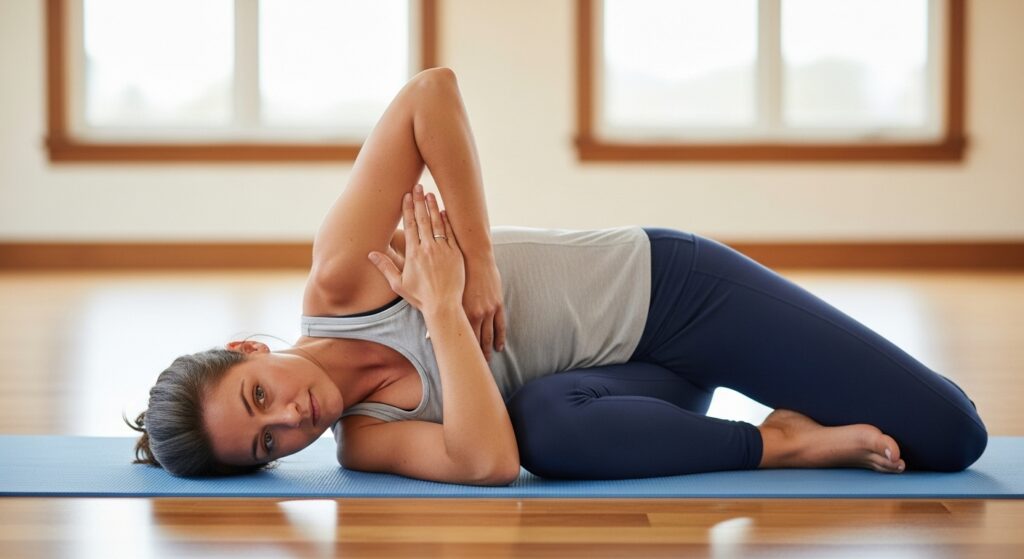
For Those Who Lift Weights or Train Hard
If you’re into strength training, this stretch is gold. It can improve shoulder rotation stretches and reduce the risk of impingement. I’ve had powerlifters add this before bench press days. They report fewer clicks and smoother reps.
Mobility work doesn’t have to be fancy. This one pose gives you a lot of return for a few minutes of effort.
A Few Personal Notes
I started teaching yoga years ago, but even before that, I had chronic shoulder tightness from working at a computer. No fancy injury, just years of small bad habits. The thread the needle stretch was one of the first poses that actually helped.
It taught me that you don’t need pain to start taking care of your body. Just awareness. Even now, I use it as a daily check-in. Some days my shoulders open fast; other days, they fight me a bit. That’s normal. The body changes day to day.
Quick Reference Table
| Purpose | How Thread the Needle Helps |
|---|---|
| Shoulder Mobility | Opens joint capsule, eases rotation |
| Upper Back Flexibility | Increases spinal twist range |
| Posture | Aligns shoulders and upper spine |
| Stress Relief | Deep breathing calms tension |
| Neck and Shoulder Tension | Releases traps and upper rhomboids |
FAQs
Q1: Is thread the needle stretch good for beginners?
Yes. It’s one of the safest and easiest yoga poses for beginners. Just move slowly and avoid forcing the twist.
Q2: How often should I do thread the needle?
Daily is fine, especially if you sit a lot. Even two minutes per side can help.
Q3: Can I do it if I have a shoulder injury?
Yes, but modify it. Keep the twist light, use props, and avoid pain. Talk with a physical therapist if needed.
Q4: What’s the difference between thread the needle and spinal twists?
Thread the needle works more on the shoulders and upper spine, whereas spinal twists (such seated or reclining) work on the whole back.
Q5: What should I feel during the stretch?
You’ll feel a gentle pull across the shoulder blade, upper back, and side ribs. If it’s sharp or pinching, back off.
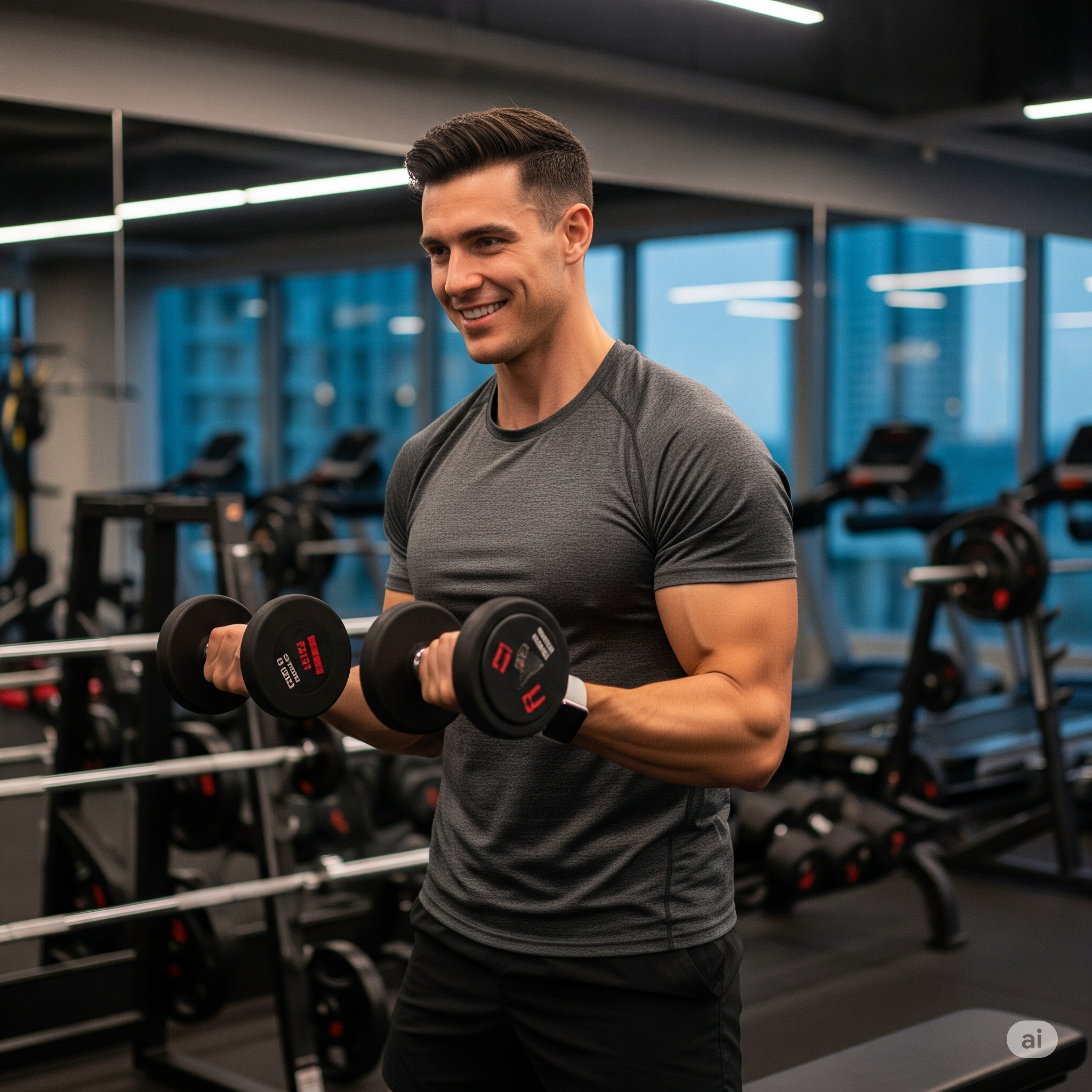
I’m Benjamin Clark, dedicated to elevating your athletic performance. Get targeted fitness plans, injury prevention techniques, sports psychology insights, and the latest in nutrition. Let’s train smarter.



